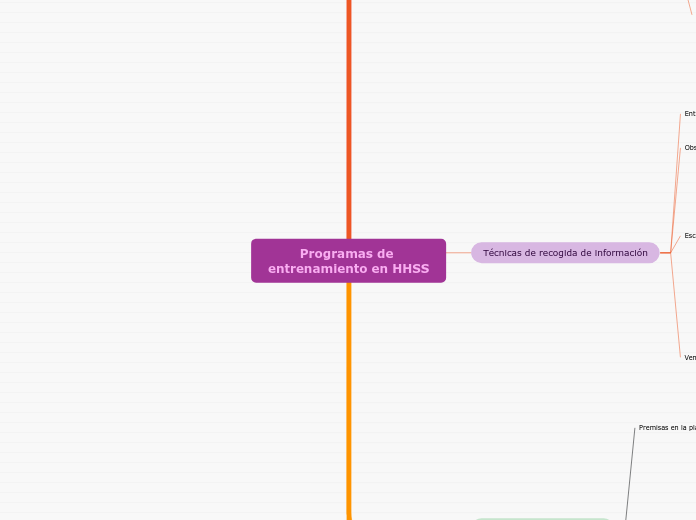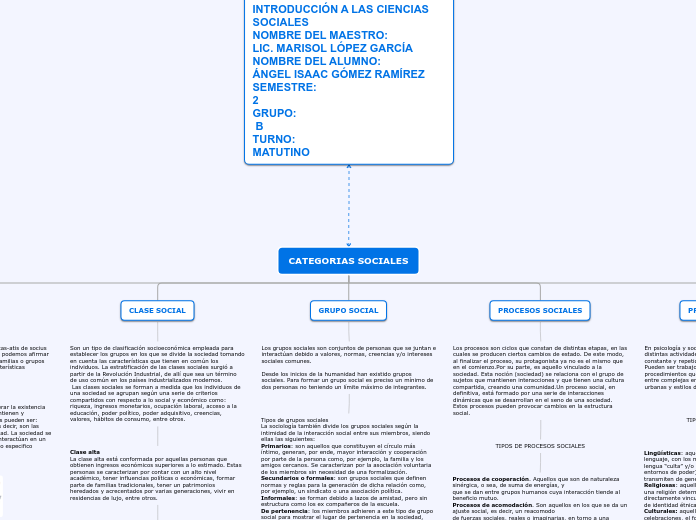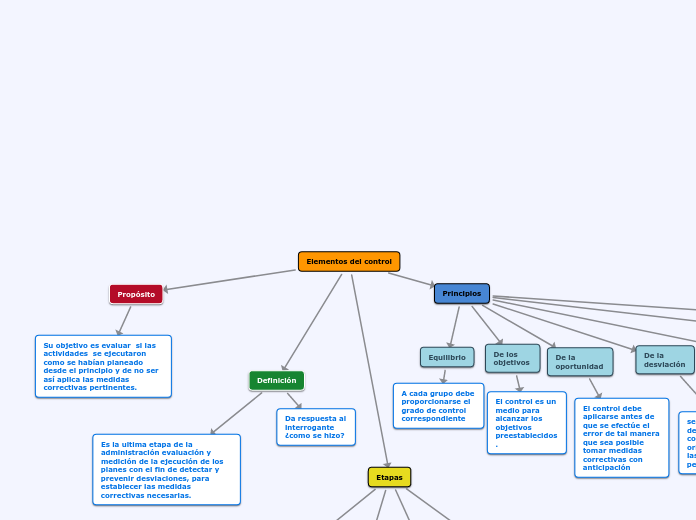Procedimientos y técnicas para adquirir HHSS o mejorarlas
Programas de entrenamiento en HHSS
To name your story, you have to think about the overall message and what you want your audience to understand from the story. Also, make it relevant and easy to remember.
Programas específicos en HHSS
PSH
Incrementar competencia social y adaptación al medio para personas con discapacidad intelectual
PAHS
Enseñanza de actitudes, valores, cogniciones, emociones y comportamientos a niños y adolescentes
PEHIS
Promover la competencia interpersonal en la infancia y adolescencia
Planificación del programa
Técnicas del programa para llegar al objetivo
Generalización
Seguir practicando hasta que esas conductas aprendidas salgan de manera natural
Tareas para casa
Conductas aprendidas pasarlas al entorno real
Moldeado
Evaluación de ejecución
Ensayo conductual
Practicar mucho lo aprendido
Modelado
Imitar a un "modelo"
Refuerzos
Negativos
Refuerzo con consecuencia positiva
Positivos
Sonreír, dar una golosina...
Materiales
Premios
Sociales
Reconocimiento ya sea verbal o gestual
Instrucciones
Premisas en la planificación
Se evaluarán las necesidades de formación, fijar objetivos, diseño de actividades...
Técnicas de recogida de información
The ending of a story is essential. We all know that if the ending is weak, what happened before loses its importance. So make it unpredictable, but fair. A resolved ending answers all the questions and ties up any loose threads from the plot.
Ventana de Johari
conocer el propio diagnóstico de competencias sociales
Escalas estandarizadas
Cuestionarios para saber el nivel de competencia social
Escala de HHSS de E. Gismero
Mide las HHSS y posibles déficits
escala reducida de ansiedad de J.M. Tobal y A. Cano
Evalúa componentes cognitivos fisiológicos y conductuales (0-4)
Escala multidimensional de expresión social de V. Caballo
2 cuestionarios que valoran los componentes cognitivos y conductuales (0-4)
Inventario de asertividad de Rathus
Se les dará un enunciado y deben decir hasta qué punto les describe
Inventario de asertividad de Gambrill y Richey
Mide nivel de malestar (1-5) y la probabilidad de responder de manera asertiva
Observación
This is the closure section of the story.
See examples of possible outcomes below:
- all problems have been solved
- it's clear how each one of your characters ends up
- your main character is transformed by the challenge
Examinar comportamiento y habilidades
Try answering these questions to come up with a closure:
- Have all the problems been solved?
- Is there a clear picture of what happens with each character in the story?
- Has the challenge transformed your main character?
- How do the characters feel in the end?
Observación externa o autoobservación
Observación en entornos naturales o simulados
Entrevista
This is the moment when the main character surpasses the last obstacle and finally faces their greatest challenge.
The climax usually follows one of these patterns:
- realization
- resolution
- choice
Type in your answer.
Historia de sus relaciones interpersonales, situaciones de interacción social que le cause problemas, valoración comportamiento social, motivación que tiene para mejora de HHSS, expectativas y objetivos que quiere alcanzar
La evaluación de la competencia social
The middle of the story is where you add layers of complications that will lead to the end. Reveal more about the character's journey. Did their personality go through changes? How did they overcome the challenges? And as you build up the story’s central conflict, make it more personal to that character. Also, from the middle act, you have to lead into the final act.
Manifestaciones del déficit en HHSS
Your character(s) need(s) motivation in order to solve the challenge(s).
Aislamiento
Evitación relaciones sociales
Fobia social
Nivel de ansiedad social muy elevada
Ansiedad social
Miedo ante una situación social
Agresividad
Actuar de manera autoritaria sin tener en cuenta a los demás
Sobreadaptación
Secondary characters also might have motivs beacuse of which they may cross path with main character or which might trigger them to help the main character.
Agradar al otro para integrarse
Bloqueo
Secondary characters might also have motives that lead them to cross paths with the main character or which might trigger them to help the main character.
Imposibilidad de hablar o expresarse
Timidez
Why does your character need to confront this challenge? What does he/she expect to accomplish by solving it?
See a few examples:
- will marry in 3 days
- can fix the mistakes of the past
Inseguridad o vergüenza ante situaciones sociales
Causas del déficit en HHSS
Each story has a main character and that character usually needs to solve a problem or challenge. The character's challenge is the one that creates tension throughout the story.
Dificultad para ponerlos en práctica
Type in any other challenges which other characters in the story need to face.
Factores conductuales (timidez), emotivos (baja autoestima) o cognitivos (pensamientos distorsionados)
Falta de aprendizajes
In most stories, there are 3 challenges. The number 3 is a mystical number symbolizing completeness. Try to come up with interesting challenges with which your character needs to struggle.
See a few examples below:
- turns into a werewolf at night
- is sent back in time
Crecimiento sin estímulos sociales, ni modelos
Entrenamiento en HHSS
In the beginning of the story (or the exposition), you will need to introduce the setting and characters. You might also want to introduce the main conflict. This part of the story is important because it gives the reader necessary background information and maybe even a first insight into a character’s personality.
Evaluación final
Evaluación de los resultados
Ejecución
2. Planificación
The setting (time & place) of a story can change throughout the plot.
Diseño de la intervención
Sensory details include sight, sound, touch, smell, and taste. These details are important because they create depth in your setting.
See a few examples below:
- the smell of fresh bread
- the scent of freshly cut grass
- rain falling onto the windshield etc.
1. Evaluación inicial
Characters are essential to a good story. Usually, the protagonist(s) is/are the most affected by the plot. Introduce a character by focusing on their actions, interests, and occupation, as the physical appearance doesn't make a difference in most cases.
Valoración habilidades con déficit
Type in the name of your character.










